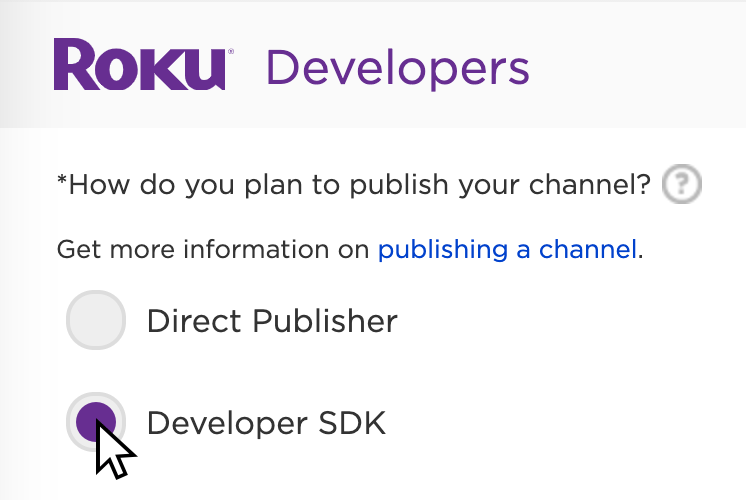Note: Roku Direct Publisher was discontinued in 2024.
There are a multitude of informative articles that describe how to set up your Roku Direct Publisher channel. However, not many of them explain the pros and cons of using Roku Direct Publisher or indicate whether it’s the right choice for you and your business. Many users start Roku Direct Publisher and spend weeks trying to figure out all the moving pieces, only to find out later that Roku Direct Publisher does not support what they need.
In this post, we will focus on the features that Roku Direct Publisher supports, its limitations, drawbacks, and when to go custom Roku SDK.
What Is Roku Direct Publisher?
According to the Direct Publisher quick start guide on the Roku website, “Video content creators and publishers can quickly and easily publish original content to a Roku channel using Direct Publisher.”

This is only correct if you are comparing it to developing a custom Roku channel from scratch. Otherwise, it’s not that quick and easy. It requires a moderate level of understanding of how VOD (video on demand) works, and it will take days to set up. Almost the same amount of time compared to any turn-key custom Roku build.
When To Use Roku Direct Publisher?
We recommend Roku Direct Publisher to our clients if they want to test the waters when it comes to having a Roku channel. Or to individuals who have the time and are willing to learn Roku Direct Publisher and the VOD process.

When Not To Use Roku Direct Publisher?
There are many reasons not to use Roku Direct Publisher. We will explain the main reasons and list most of the features that Roku Direct Publisher does and does not support at the bottom of this post.

The first factor you must consider is your business model. If you are planning on having an SVOD (subscription video on demand), or TVOD (transactional video on demand), then Roku Direct Publisher is not for you because it only supports AVOD (advertising-based video on demand).

The second factor is authentication. If you want to authenticate your users, then Roku Direct Publisher is not the right choice. It also has its limitations when it comes to content. Roku Direct Publisher can have up to 25 categories and a maximum of 40 items in each category, according to Roku Direct Publisher documentation.

In addition, Roku Direct Publisher comes with Roku analytics, which for the most part is fine for individuals. But if you are a business and need more robust analytics, then you must go custom build.

Biggest Drawbacks of Roku Direct Publisher
The most common issue that every user will encounter when setting up their Roku Direct Publisher channel is the content update delay. You must wait hours after reingesting the content feed for it to update on your channel.

This is the most frustrating part of using Roku Direct Publisher for any business or individual, where quality control is a high priority. You must wait hours to verify your latest content, and if you made a mistake and need to fix it, then it could take days. That’s why we always recommend using a third-party tool to avoid errors and wasted time.
Another drawback is getting support from the Roku team. They are extremely busy and fixing a bug could take days or even weeks.
Features Support
Here is a list of features that Roku Direct Publisher supports:
| Features | Roku Direct Publisher supports |
|---|---|
| AVOD (advertising-based video on demand) | YES |
| SVOD (subscription video on demand) | NO |
| TVOD (transactional video on demand) | NO |
| DRM (digital rights management) | NO |
| Authentication | NO |
| Basic analytics | YES |
| Third-party analytics (e.g., Google analytics) | NO |
| MRSS or JSON content feed | YES |
| Content through API | NO |
| Unlimited content | NO |
| Instant content update | NO |
| Search | YES |
| Menu screen | NO |
| Terms of use screen | NO |
| Privacy policy screen | NO |
| Custom layout | NO |
Bottom Line
Roku Direct Publisher is a great free online platform for individuals and small businesses. It will allow you to jumpstart your Roku VOD channel if you are willing to spend the time to learn, test, and debug.

